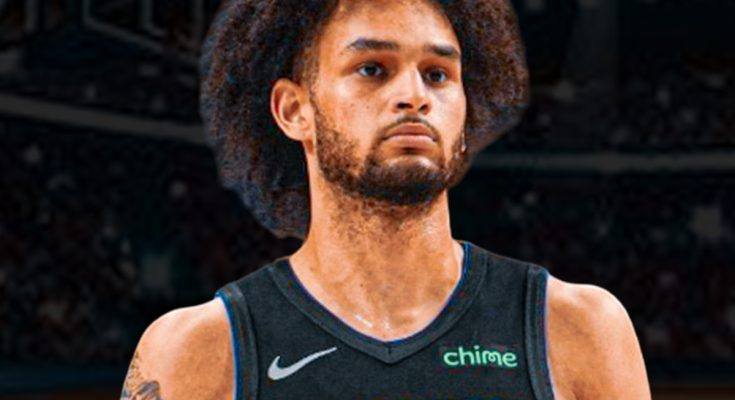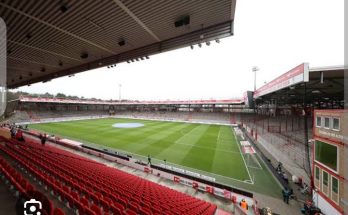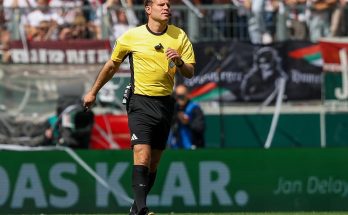The Dallas Mavericks were riding a high after a thrilling postseason push, anchored by their superstar duo Luka Dončić and Kyrie Irving. But even amid all the glitz of big-name acquisitions and playoff dreams, the real story bubbling underneath was the steady rise of rookie center Dereck Lively II. A foundational piece in the Mavs’ recent frontcourt strategy, Lively brought length, athleticism, rim protection, and a refreshing energy to a team desperately needing frontcourt stability. However, the momentum surrounding Lively’s development has hit a serious snag. Persistent injury concerns have once again surfaced, casting doubt not only on his ability to contribute in the short term, but on the Mavericks’ long-term plans for him as a centerpiece in their evolving roster.
Lively entered the NBA with a skill set and potential that had scouts buzzing. Standing 7’1″ with a 7’7″ wingspan, he was one of the few big men from the 2023 draft class whose game felt tailor-made for the modern NBA. A shot-blocking specialist with a nose for putbacks and lobs, he made an immediate impact with Dallas, especially when paired alongside Luka, whose pinpoint passing made Lively’s life a lot easier in pick-and-roll actions. He wasn’t just an athletic marvel; he was developing a feel for positioning and team defense at a pace that exceeded expectations for a player barely out of his teens. And then came the injuries.
Injuries in the NBA are part of the game, and everyone from stars to role players has to deal with them. But with Lively, the concerns are mounting not just because of their frequency, but because of their timing and nature. Lingering lower leg soreness. Recurring back spasms. Hip stiffness that refuses to loosen up, even with therapy and rest. These aren’t just one-off flare-ups. They’re stacking up. Each injury derails weeks of development, conditioning, and chemistry with teammates. And each absence forces the Mavericks to scramble, plugging holes with stopgap veterans or adjusting their defensive schemes entirely. That instability has become an increasingly frustrating reality.
Dallas has every reason to worry. While Lively’s upside is undeniable, their faith in his long-term reliability as a franchise building block is starting to erode. Every missed game is another missed opportunity to develop timing with Dončić in pick-and-roll situations or build on-court chemistry with Kyrie Irving during transition plays. Every DNP is another moment of lost growth, of learning to read opponents, of gaining the stamina needed to bang bodies with elite bigs like Nikola Jokic, Joel Embiid, or Bam Adebayo. For a player who already came into the league needing to polish his footwork, strengthen his post defense, and expand his offensive touch, these setbacks are critical.
The problem extends beyond just Lively. The Mavericks’ entire defensive identity, especially during their late-season run, was beginning to mold around the presence of a mobile, rim-protecting center. When Lively was on the floor, the Mavs were noticeably better at defending the paint. His ability to rotate quickly and contest shots altered opponent shot selection and boosted perimeter defenders’ confidence to play more aggressively. He wasn’t just a shot-blocker; he was a disruptor. Take him out of the lineup, and the defense often reverts to the shaky form that had plagued Dallas in the early part of the 2023-24 season.
Moreover, Lively’s absences put extra pressure on aging or less mobile bigs like Dwight Powell and Maxi Kleber. While those veterans offer leadership and occasional bursts of energy, neither provides the consistent vertical threat or switchability that Lively was growing into. Rookie Olivier-Maxence Prosper has shown some flashes, and Daniel Gafford has been useful, but none replicate what Lively was starting to offer as a true two-way center. As the Mavericks try to maintain a trajectory toward Western Conference contention, the absence of their defensive anchor leaves a glaring gap that no other player currently on the roster can truly fill.
From a coaching standpoint, Jason Kidd now faces a tricky balancing act. How does one build a game plan around a center whose availability is unpredictable? Should the Mavericks double down on developing Lively in hopes that he becomes a cornerstone, or pivot to finding more durable pieces in free agency or trades? The front office, led by Nico Harrison, surely expected some rookie lumps—but not a prolonged pattern of physical setbacks this early in Lively’s career. Even more pressing is the looming question of whether to protect Lively’s body by reducing his minutes or risk further strain in order to keep the team’s playoff hopes intact.
In fairness, Lively is still a teenager adjusting to the brutal physical toll of the NBA. His injuries haven’t been catastrophic; they’re the kind that often hit young bigs who are still growing into their bodies. It’s also true that similar cases—like Anthony Davis early in his career or even Kristaps Porzingis—eventually stabilized with better strength training, nutrition, and experience. But not all big men recover or adapt. For every Davis or Embiid who figures it out, there are cautionary tales like Greg Oden or even Myles Turner, who flashed immense talent but were frequently derailed by soft-tissue injuries and inconsistent conditioning.
There’s also the psychological toll to consider. Lively is a fierce competitor. Every time he’s forced to sit, it’s not just the team that suffers—it’s his own belief in his readiness and durability that takes a hit. That confidence is crucial, especially for a big man whose entire game is built on timing, leaping, and fearlessness around the rim. A cautious Lively is not the player the Mavericks need. They need him aggressive, relentless, and imposing. They need him healthy—and right now, they can’t count on that.
Internally, there’s growing debate in Dallas about how to handle Lively moving forward. Some within the organization advocate for a conservative approach: rest him until he’s fully pain-free, even if that means sacrificing development time. Others believe he needs to play through the minor discomforts and get used to the grind of the league. There’s merit to both approaches, but the stakes are higher than ever. The Mavericks are no longer a rebuilding team. They’re a contender trying to break through in a stacked Western Conference. They don’t have the luxury of waiting forever.
All of this arrives at a crucial juncture for the franchise. Luka Dončić is in his prime and will eventually demand results, not patience. Kyrie Irving, for all his brilliance, is on a delicate timeline that hinges on health, chemistry, and winning. If the Mavericks can’t provide a supporting cast that stays healthy and effective, it may trigger another round of frustration and instability in the locker room. Lively was supposed to be part of the solution—a young, affordable, high-upside center who could anchor the defense and grow alongside Luka. Instead, he’s quickly becoming a question mark, and the franchise can’t afford too many of those.
From a developmental perspective, the timing couldn’t be worse. Summer League reps were limited. Training camp minutes may now be restricted. And unless Lively finds sustained health soon, his second year might be marred by the same start-stop rhythm that plagued his rookie campaign. That’s not just bad for him—it’s potentially disastrous for the Mavericks’ plans.
There’s still hope, of course. Modern sports science is more advanced than ever, and the Mavericks have one of the better medical teams in the NBA. Load management strategies can help, targeted physical therapy could address underlying imbalances, and strength coaches will certainly ramp up his core and lower-body resilience. Lively also seems committed, locked in, and hungry to prove he’s not just another big man with potential—he wants to be great. That matters. But no amount of drive can substitute for a healthy, durable body. That’s the reality he and the Mavericks must now face together.
The weeks ahead will be pivotal. If Lively returns soon and begins to show durability, the narrative shifts and optimism returns. He’ll once again look like the franchise big man Dallas hoped they drafted. But if these injuries linger, the Mavericks may be forced to reconsider their trajectory, not only for this season but for the future. Will they draft another big next summer as insurance? Will they explore trades to shore up the position in case Lively can’t stay healthy? Will they shift their entire defensive scheme to something less reliant on interior shot-blocking?
These questions are no longer theoretical—they’re pressing. And in a league where windows can slam shut quickly, the Mavericks don’t have the luxury of waiting much longer for the answers. Dereck Lively II is immensely talented, fiercely determined, and has already shown flashes of what makes him special. But until he can stay on the court consistently, he remains a promise rather than a pillar. For Dallas, that’s a risky bet in a race that’s getting tighter by the day.



